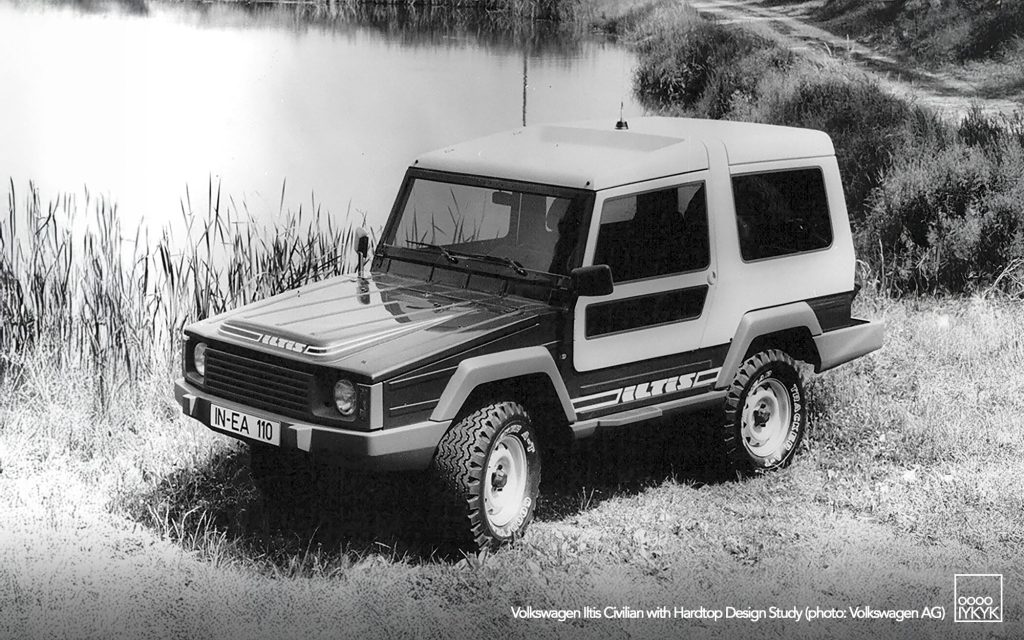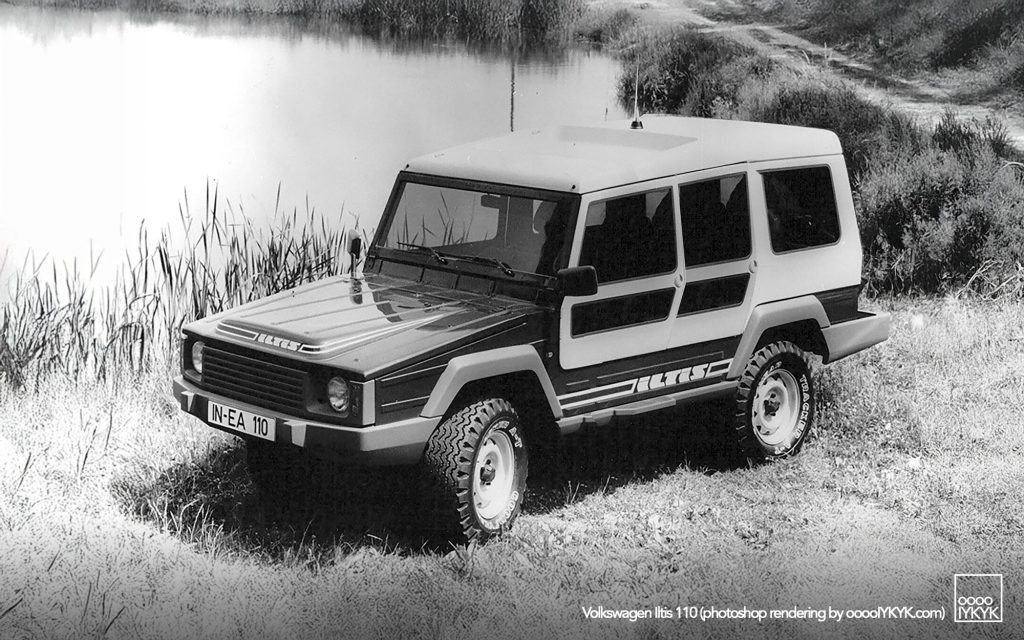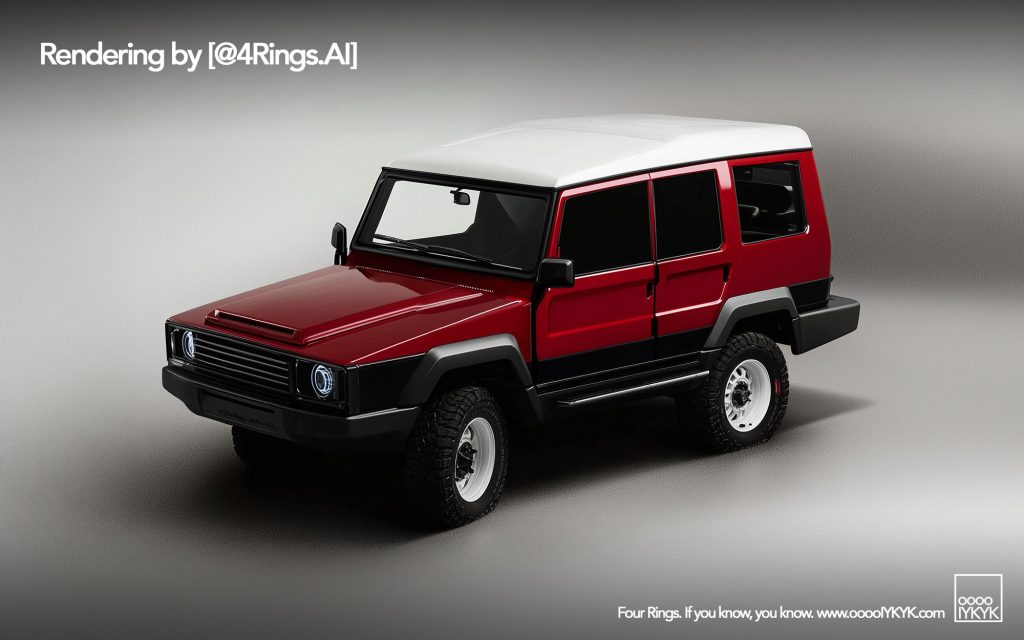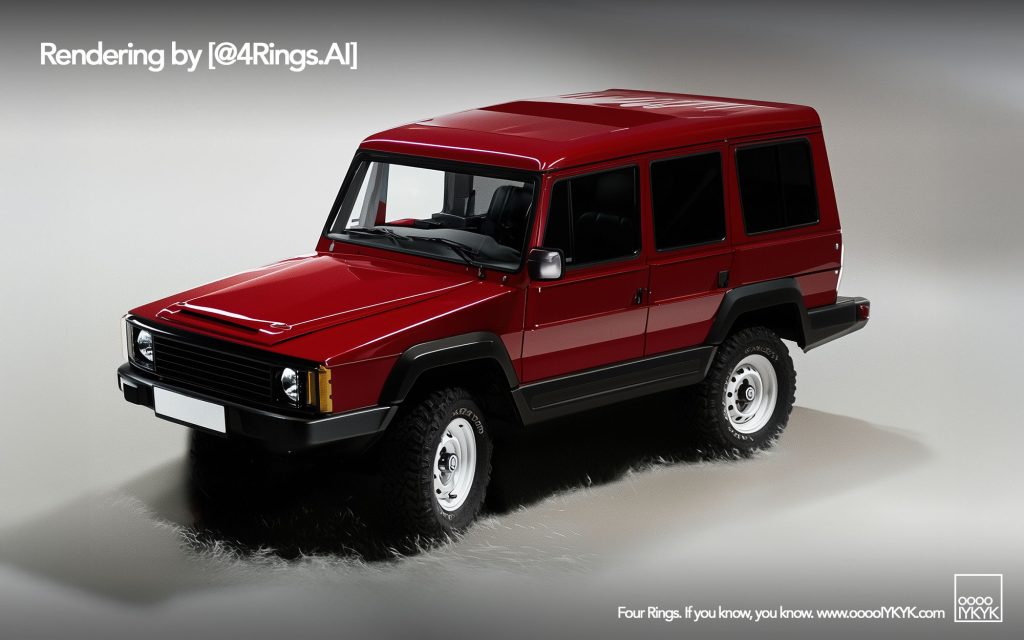I’m taking this week’s A.I. focus in some different directions. The subject is the Audi-developed Volkswagen Iltis 4×4, doing a basic imagining of what it might have looked like as a hardtop wagon. Such a model was never developed, though over the years it’s become the clearly preferred configuration for trucks that went on to become mainstays in military or civilian applications that Iltis was mainly targeting, trucks like the Mercedes-Benz G-Wagen, Land Rover Defender and Jeep Wrangler.
With this creation, I’m also going to dig into some other graphic tools and skillsets – namely Adobe Photoshop for photo editing and the Midjourney A.I. image-generating tool’s Retexture functionality. Retexture works a bit differently than simply asking for a query.
The result is fascinating, a most excellent What If… scenario for an obscure Audi creation that was the inspiration for quattro. It’s also a great springboard for a greater discussion of how we consider media like a mundane press photo of an obscure design study or how much that could/should be used to inspire additional works that take the subject places that would have been hard to imagine.
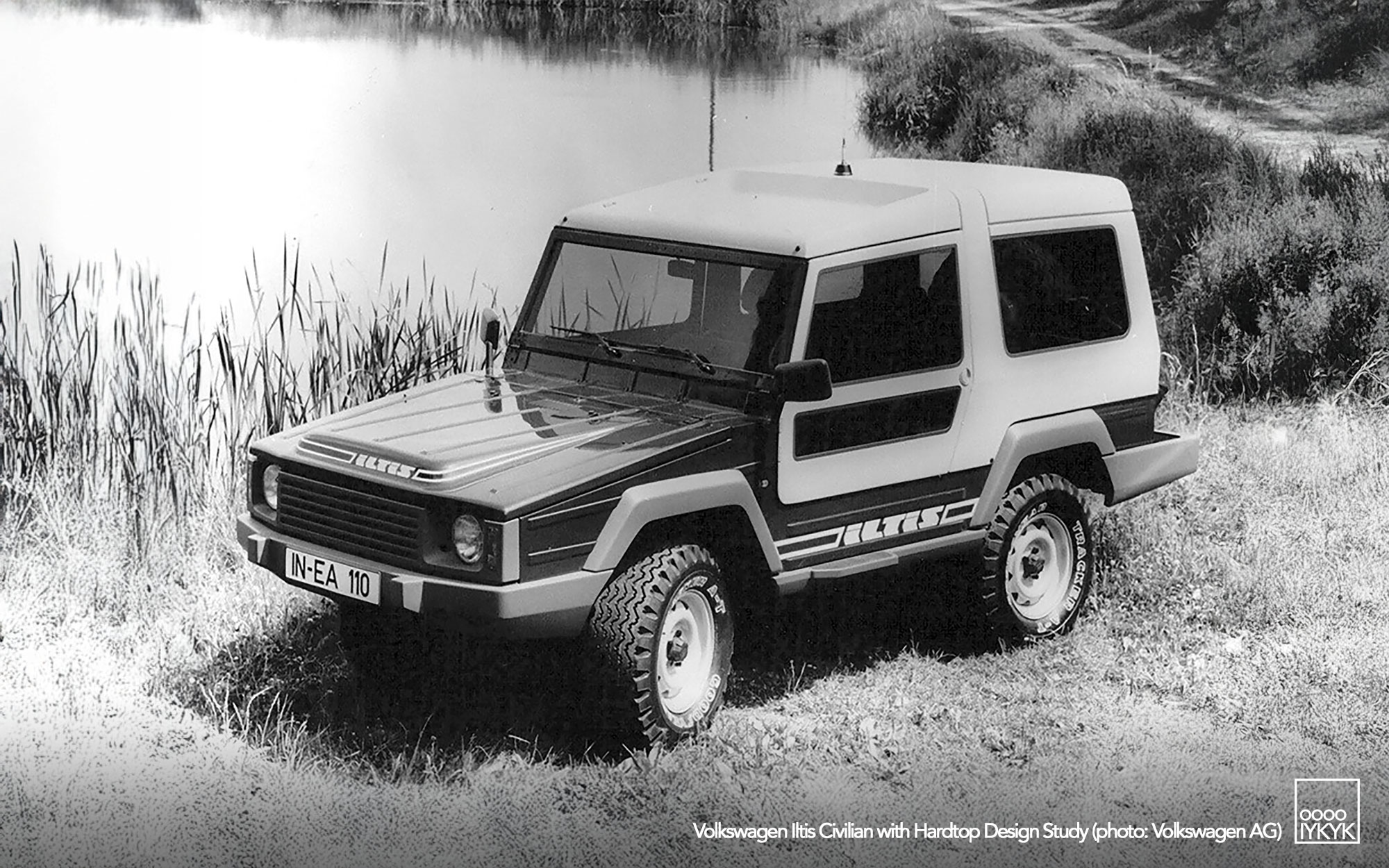
Let’s Begin with the Iltis
An initial proposal by Audi for military use and codenamed EA 503, the Iltis is a fascinating focus for a number of reasons. The name means polecat, a small European mammal related to the skunk known for its wily ways. It seems a fitting name for a small and rugged 4X4.
Though badged a Volkswagen, the Iltis was a proposal by Audi that was later produced by Ingolstadt before tooling was eventually sold off to Bombardier for production under license in Canada for the Canadian military. The Iltis wouldn’t be the only time Ingolstadt conceived products for other brands within the Volkswagen Group orbit, notably also being around the same period Audi produced Porsche 924.
While the Iltis only enjoyed marginal commercial success as measured by business with militaries, it was a favorite project Audi development engineer Roland Gumpert who was instrumental in its creation. Preferring the Iltis in extreme cold-weather testing, the little 4×4 may have been drafty and slow, but capable all-wheel drive design regularly had Gumpert passing colleagues when the road surface became a challenge. In these and other exhibitions of capability, the Iltis inspired Audi management to pursue the adoption of all-wheel drive to automobiles, thus inspiring quattro. By 1980, Gumpert would take a role running Audi Sport and, in those days prior to the quattro’s arrival in the WRC, entered three Ilti and his team members from Audi Sport in the Paris Dakar Rally where the group managed the first-ever manufacturer victory in the rally raid enduro. And though here again it was badged a Volkswagen, the Iltis campaign at Dakar was primarily an effort by Audi.
The car in the original press photo for this project is a design study built by Audi and presented by Volkswagen at the Frankfurt IAA motor show. The car aimed to convey the civilian potential of the Iltis design as Audi and Volkswagen pursued other applications for their creation. The design study featured a unique removable hardtop that complemented its compact four-seater cabin configuration, attempting to make two doors work on the existing wheelbase.
While the design study never made it to production, Audi and Volkswagen did move forward with production of a Civilian Iltis. Examples remain exceedingly rare, with only 747 of the 10,801 production run in Ingolstadt being built to this non-mlitary specification.
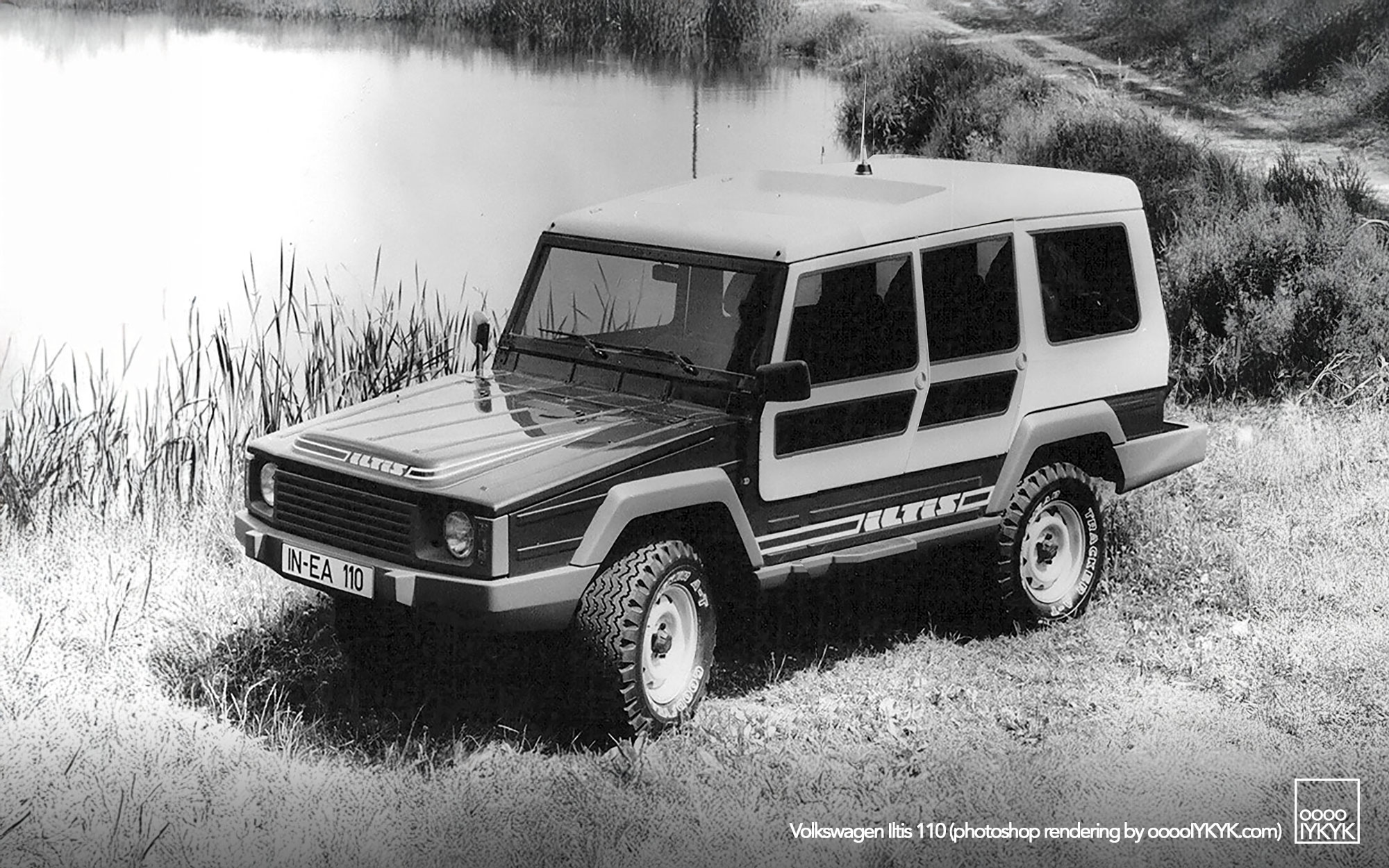
Imagining an Iltis 110
Almost all examples of the Iltis are a soft top, with some aftermarket-produced and owner-fitted hardtops occasionally seen. Press photos of a higher-grade civilian example though are inspirational. The hardtop shows a more livable car, while attention to fender flares and higher grade steel wheels make it an attractive alternative to Jeep CJs of this period..
Note the IN EA 110 registration tags on the design study. They helped inspire the idea for a longer-wheelbase Iltis. In order to initially envision it, I first turned to photoshop. Given the boxiness of the shape, making a photo-based rendering of a long-wheelbase Iltis wasn’t terribly hard. I didn’t spend a whole lot of time blending elements because the photoshopped image was just a step in the process. Were the project to have ended with the image-based rendering above, more care would have been used for blending the details.
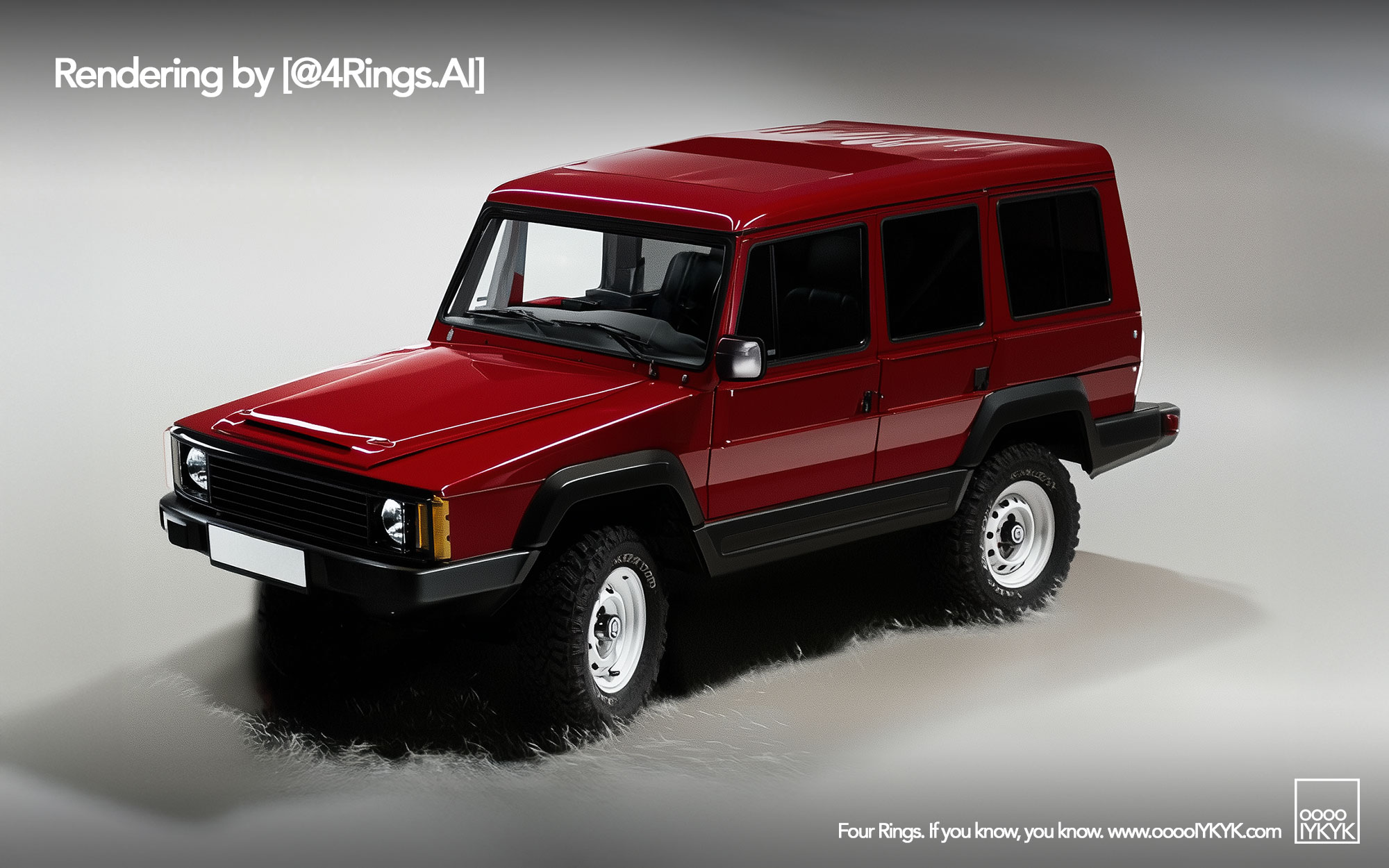
Midjourney Retexture Function
Even with the most rudimentary understanding of A.I. image generation, most know that you typically fine tune a search query much as you would with a search engine. These tools are so advanced, asking for a derivative of a modern car more ubiquitously found on the internet isn’t hard. See previous entries in this series for the RS e-tron GT Avant and even the 5-door Audi ur quattro Sportback that were created almost entirely in this fashion.
The Iltis though… it’s obscure. It’s so obscure that, at least for now, A.I. tools like Midjourney don’t really know what you’re asking for. You can’t just ask for an Iltis, much less a derivative of an Iltis that doesn’t exist. That’s where retexture comes in.
I started working with this press photo of the Frankfurt hardtop design study because it’s an old PR shot, meaning about as in-the-public-domain as one might expect. While I do have some photos of my own of an Iltis I drove years ago, the hardtop was the interest here.
So, you need a base photo, but retexture isn’t going to do the rest of the work. That’s where the need to photoshop the Iltis into a longer-wheelbase wagon came into play. With that completed, asking Midjourney to retexture the photo further changes the work. It adds color and other details, most specifically the red paint, white roof, white wheels and studio-like background I’d asked for and builds these from this otherwise black and white press shot. It changes details, but I tend to find those deviations fascinating.
Typically with these tools, you still get some unexpected results. For any of my A.I.-generation work, I still tend to have a post process where I fine tune details. My images are mainly used on the @4Rings.AI Instagram account, so the focus is usually to just make them passable without burning up much time fixing minutia like lug nut placement, etc. I get the images to a point, and then I push them out because they’re more often than not only for entertainment value.

Considering an Iltis 110
A couple years ago, I was hanging out by the beach in Kennebunnkport, Maine when a military-spec Iltis pulled up and parked next to my Audi RS 6 Avant. The occupants were French Canadian, and quite obviously rocking a beach truck with Canadian heritage. Perhaps they’d driven it all the way down from Montreal. I knew what the Iltis was immediately, part of my own four rings fixation.
I’ve always sort of desired an Iltis, and desire doesn’t lessen when you see one in out int eh wild and with a backdrop seemingly perfectly aligned to display the car’s appeal. As I’ve considered finding one, likely in Canada, I’ve gone down the road of considering converting it to a more Civilian spec. Dig deep enough online and you’ll find that aftermarket hardtop manufacturer or someone 3D printing replicas of those Civilian fender extensions. I swear I have them bookmarked somewhere, likely discovered that same week, lounging about on the porch of what summer vacation week in Maine.
This creation though… it makes me want to go deeper even if my budget doesn’t align. The Iltis is square, so extending it should be relatively easy… at least one would think. And since it had a corporate 4-cylinder in there, fitting it with any number of VW Group engines likely also wouldn’t be hard. Could you imagine it with a torquey TDI? One of Gumpert’s team’s three Dakar Ilti actually used a normally-aspirated petrol 5-cylinder, though fuel efficiency didn’t make it the best suited of the three for the Dakar Rally. Still, there are just so many possibilities.
So, publishing this story and putting these images out there into the ether, I likely won’t be the first one to attempt to build an Iltis 110. Perhaps these images will inspire someone to do it first.
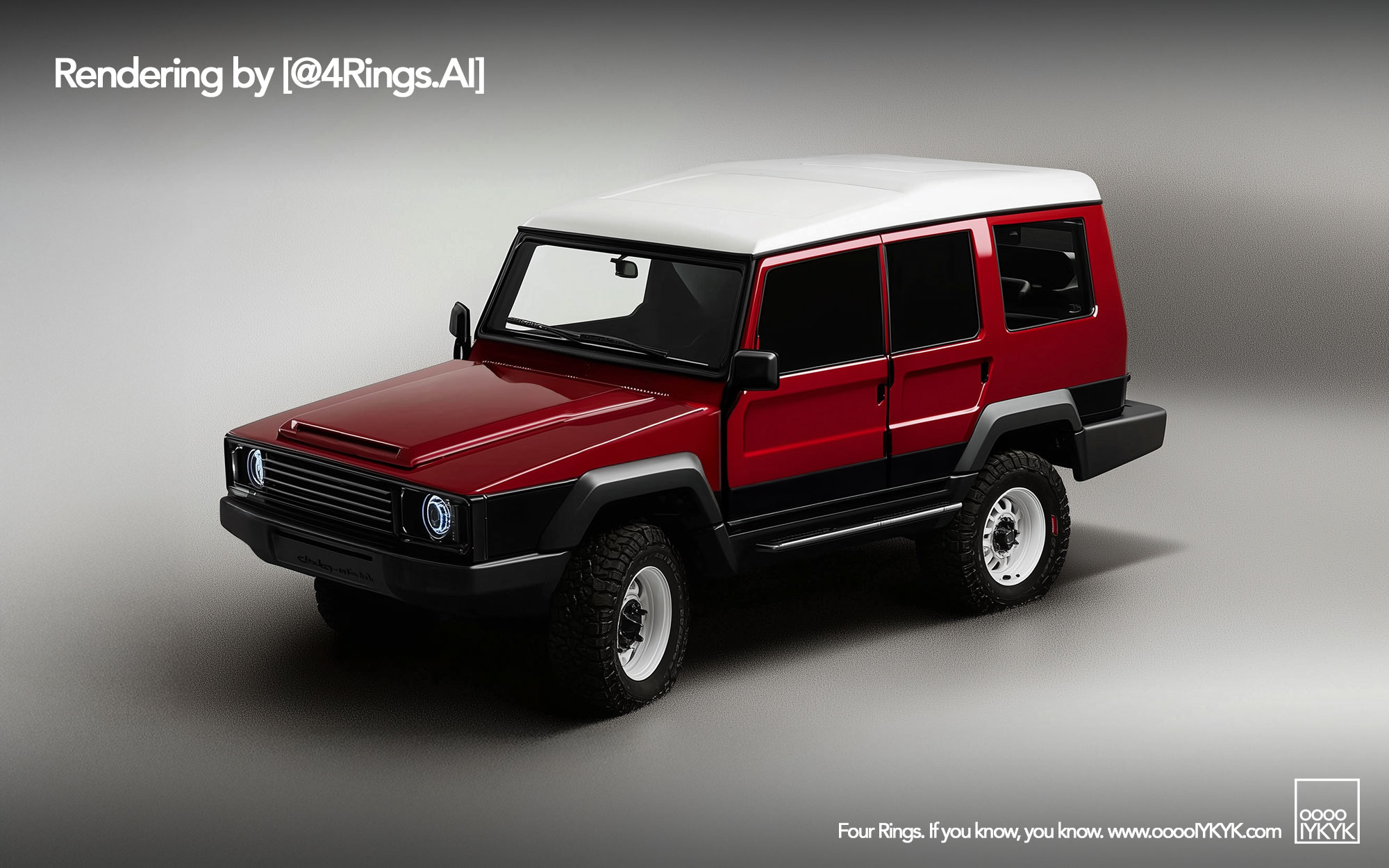
Considering A.I. Image Generation
A.I. image-generation is in the news for some not-so-great reasons treading on personal liberties. Legislation is happening to protect people as a result, which both the responsible and highly necessary thing to do. That this is all going on as we speak makes it a good time to have an open discussion about what is found to be acceptable use and what taboos maybe shouldn’t be messed with. In that regard, the mundane and obscure nature of the Iltis seem to make it a proper subject for starting my own discussion on the subject.
These rules aren’t written. Nevertheless, advancements in the underlying tech are moving fast. And like the music industry with the arrival of synthesizers in the 80s, remixing in the 90s, the arrival of Napster or the advent of bootleg mashups of the 2000s, it seems like the creative space is going to fumble around a bit with these game changing new tools until norms are established and rules get written.
My point with @4Rings.AI and this series is not only to entertain through imagining cool Audi-themed What If… scenarios, but also to further the conversation on what these new norms are to become. I want to approach these discussions with an educated viewpoint. I also want to be aware of what these norms are when they fall into place so that I can operate responsibly in my own creative process. It’s a fascinating time for a revolutionary technology, and I find diving into it head first is consistent with Audi’s tradition of progress through technology, a path Audi set out to blaze with the Iltis-inspired advent of quattro.
If you’re inspired by this discussion, I’m going to go ahead and create a thread on the ooooIYKYK Facebook Page, the ooooIYKYK presence on LinkedIn, as well as a post collaboration between @ooooIYKYK and @4Rings.AI on Instagram. I’d love to hear your thoughts either on the Iltis 110 idea or on more philosophical considerations of A.I. image generation and its growing use in modern society.
PHOTO GALLERY
